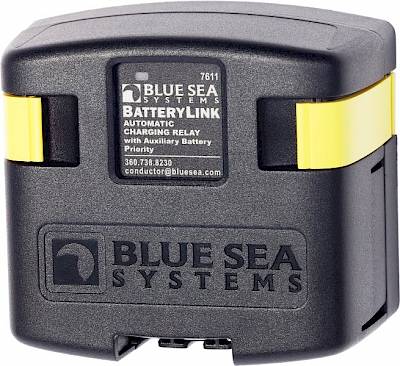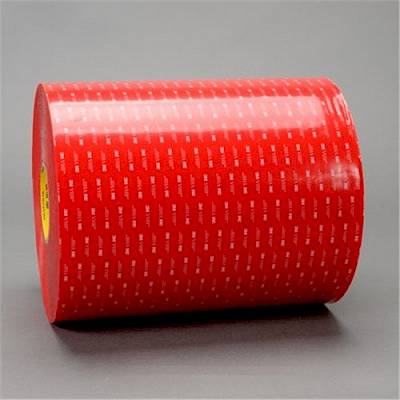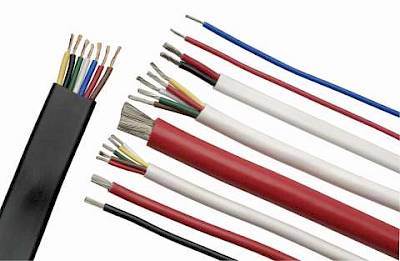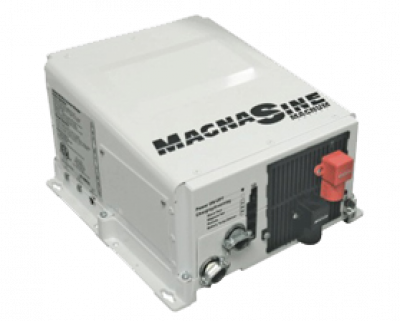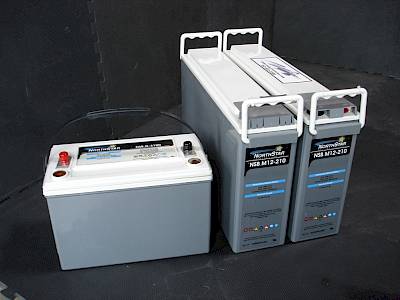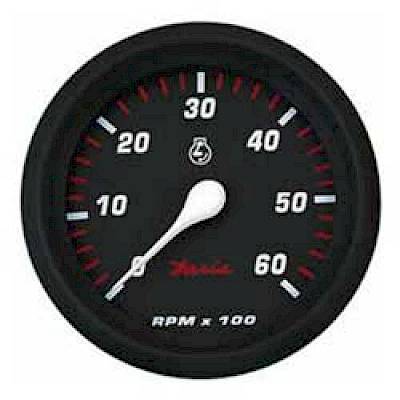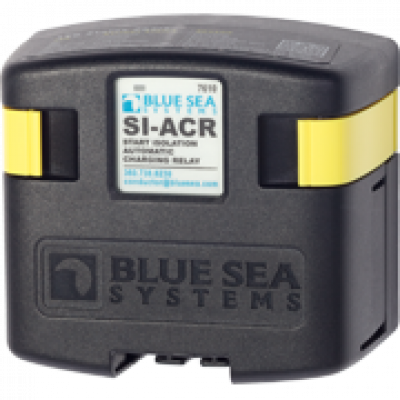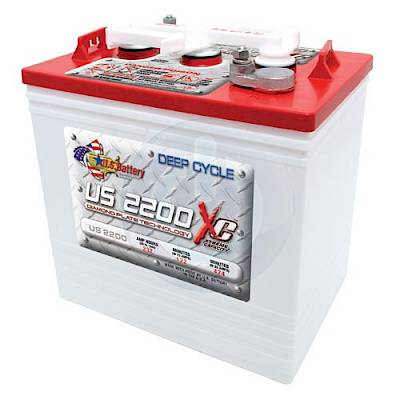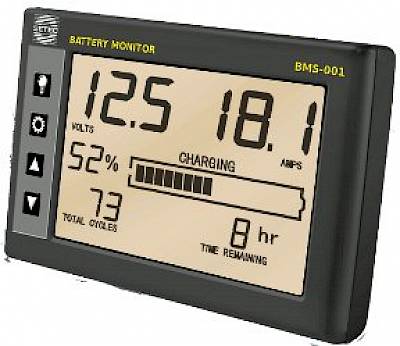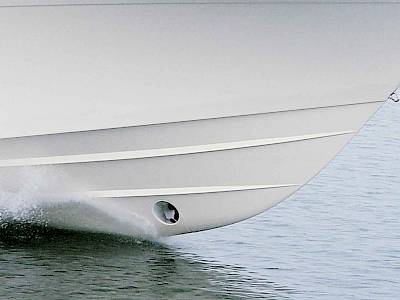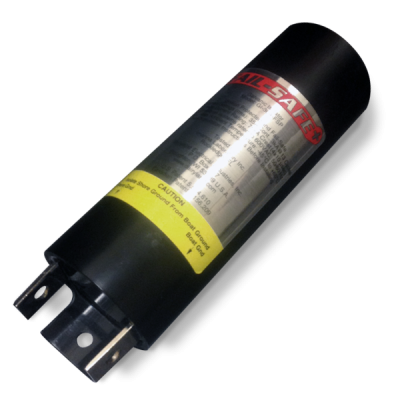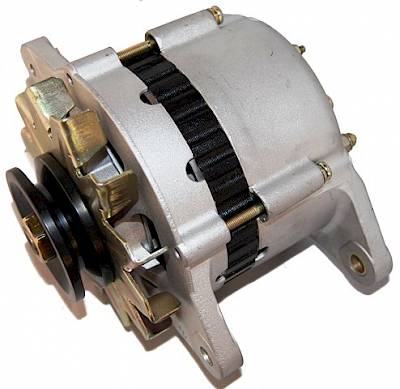Live Stream with Jeff Cote - April 24, 2021
Transcript is auto-generated.
s this happening all right
everybody hey it looks like we're live
with no technical glitches this morning
well done teamwork well it's a rainy day
in vancouver but uh even better day to
be talking about our
boats and jeff has some exciting news
coming up
about talking with people in the
industry about boats why don't you tell
us about that first of all good morning
jeff how are you
good morning melissa good morning hello
everyone thanks for being here today
uh happy saturday so yeah i just want to
share a little bit of the news uh
we've been uh working with a lot of
different people folks in the industry
and we're gonna start our own
podcast uh conversation called doc talk
with jeff cote
um just sharing my passion i get to the
opportunity to speak to a lot of people
that
have a lot of different experiences and
or sort of
i guess in-depth knowledge um and so our
first one is actually going to be with
the president of actisense
uh we're going to be doing a talk on
nmea
and enemy 0183 and all the different
sort of trends that are happening in the
integration world between
old and new and the digitization of our
boats
and so yeah it's a little bit sort of a
little bit more geeking out really
um and understanding why we do what we
do on our boats
um and so we're going to be launching
that podcast uh in the first part of may
pretty excited about that
anyways let's get with questions we are
looking forward to it well paul was in
uh early this morning he's got the cool
first question paul from toronto
and he has an inverted question i have
a master volt 12 2000 120
i ordered it to hardwire into my
beneteau oceanis
however was shocked to see the av output
was
2 gvci 120 outlets
i call tech support and they do not
offer an adapter
however the rep suggested i plug a
spliced power cord and
hardwire the power cord would you
suggest this oh good question
uh so um i'm gonna basically talk paul
and i'm not sure i understood completely
your question so if you
tell missy as i'm answering if i'm going
in the right direction or not
it's not uncommon to have inverter
chargers
that actually have the output of the
inverter
be directly instead of being a bunch of
wires that you have to plug
in and you know terminal strips which is
common
some inverters literally have like an ac
outlet like you would have in um
in our bathrooms uh with a gfci so two
15 amp outlets
coming out of an inverter and that's
common even xantrax makes that product
that's an option on their xc2000 and
xc3000
line of inverters chargers as well
so yeah sometimes you if the inverter
that you purchase
only has that output then yeah you could
literally plug in
um an ac 15 amp outlet
and then energize some circuits from
there obviously
maybe that's why your question most of
us that hardwire
our inverters into our boats would
rather have the ac output
actually be on a 30 amp circuit right
because a 15 amp circuit is what you're
going to get from a gfci
and so you're going to be limited on the
amount of
output amps that you can draw from your
inverter
with that sort of setup so it's not
uncommon it happens generally we will do
that on boats that don't want to
integrate the panel some folks
right say hey jeff i want an inverter on
my boat but i want it to be stand alone
i want it to be under the chart table
i don't want to integrate into my panel
my panel's too complicated i don't want
to go there
i just want to plug in what i need
on this inverter and i did this on my
own boat like i actually have two
inverters on my boat
i have a small little 300 watt inverter
and i have a 3000 watt inverter
and the little 300 watt inverter is
basically
has a power bar connected to it and i
plug in all different sort of little
gadgets uh plug into that and then my
3001 inverter is the one that energizes
the all the ac circuits on my boat
except the hot water tank of course and
uh so there's
depends on what you do and how
integrated you want to do your install
and that's why there's two sorts of
products products that are either
hardwired
or products that actually uh inverters
that actually output
um ac120 on a gfci outlet
so there you go paul all right good
question
uh we have a returning guest the uh mv
semi-retired and i just found out here
they're from port can
uh canaveral florida oh wow isn't that
great man watch this
channel hope to make it up to the
seattle boat show and see you
wondering if you can talk about charging
lithium
batteries with alternators it's such a
hot topic right now
yeah good question um lithium is
you know the concept of a drop in
lithium replacement
is more sort of wishful thinking than
reality if it was easy we wouldn't be
talking about it right
um the challenge is at one point
your lithium battery might say enough
and
enough means that the bms for whatever
reason is going to say i can't take more
charging
voltage and the ensuing amps and i can't
do it anymore so i'm going to disconnect
myself from whatever's connected to the
battery and
on the more budget batteries they only
have one positive post
meaning there's no different distinction
between what's called a charging
circuits
and load circuits your your battery
might simply disconnect itself and at
that point your house battery is
offline disconnecting a battery as we
know
from an alternator while the alternator
is running is going to damage your
alternator
an alternator can never suddenly be well
not suddenly be running and suddenly be
disconnected
from a battery and you can't do that via
battery switches that's why all the
battery switches say at the bottom
never turn engine uh switch to off while
engine is running they have a disclaimer
on pretty much even the purchase
switches the blue c switches
and so you never want your alternator to
ever ever be disconnected
from a battery or the only battery
connected
to the alternator while it's running so
this is where
things get complicated and where
some of us are installing these maybe
either battery isolators so we're going
to put a battery isolator on the output
of the alternator so the alternator is
actually going to two places
the lithium battery bank and maybe an
engine
start battery and so even if the lithium
battery bank
disconnects itself because of over
charging at least your alternator still
has a path to an engine battery
so that's one way or another way is
common two is
actually have the alternator go only to
the engine battery
and then have what are called dc to dc
charging converters
uh sharing the charging voltage from the
engine battery to the house battery
so those are the two most common sort of
setups
either battery isolators or dc to dc
charging
and that's all in the purpose of
wandering or worrying
about what happens if ever my bms on my
lithium battery says
enough and they disconnect the positive
posts and if that happens when the
alternator is running
you need to make sure that that
alternator is connected to a battery
and that's why it's a big hot topic but
there are solutions to that you just
have to be careful
and thorough in doing it good question
all right next up
scott from london ontario he said his
boat hasn't seen the water
didn't see the water last year and he
doesn't have solar he has a flooded uh
lead acid battery bank charged to full
every two and a half months then self
just
discharges to 65 rinse and repeat
is there long term damage yeah well
okay so first of all let's put this into
context a great question
uh scott uh i went to school just near
there in waterloo ontario
fond memories uh of my schooling days
there
when i was buried in my books um so
first of all every time we use a battery
we damage it
so the extent is to what extent right so
using
a battery or you know even having a
battery not being used and not
being charged is also damaging a battery
but that's we got to quantify it's like
like our bodies are also being used and
damaged and they're not going to last
forever nothing
really lasts forever um
and so i would say yeah if i had a boat
like yours
um i would suggest having solar as a way
to not have the batteries
go so much down to 65 because flooded
lead acid batteries and lead acid
batteries even agm
like to be sort of what's called float
charged or at the very least
float drift you know maybe to 12 5
12 6 on a 12 volt battery and then
brought back to float right sort of a
cycle of on off
and a solar controller is a great thing
to do that because the sun
basically turns off at night right it's
no longer there so it's a great sort of
you don't even need a lot of
sophistication the sun's shining in the
day
your batteries go you know they try to
get as full charge as possible overnight
they might discharge a little bit
and then again it repeats so i would
suggest that
some form of solar would be a good way
to maintain your battery's life for
longer right so that they don't sulfate
because the challenge is when our
batteries go
in a state of discharge over the longer
period that is right
the battery is going to sulfate which is
kind of a word to say that it's going to
age
and it's going to be hard for you to
re-energize portions of the battery
plates
that have sulfated and that's where some
people equalize
but that's a separate topic so good
question scott thanks for asking
all right shout out to kit she calls us
raincover
and yes it is raining it is today it is
of course
oh it's also raining in heidegger shout
out to robin taylor how
are you hi robin thanks for joining us
we also have drew in victoria hey drew
good morning look at all these people
this is fantastic
all right here we go question oh estonia
someone's visiting from estonia
i have installed a three output victron
battery isolator however there's also a
need to charge the fourth
battery individually on the go i plan to
use the victron
cyrix battery combiner okay comment
yeah battery combiners are good um it's
a way of basically forcing a parallel
between one battery and the other
battery right
um and it's you know a hot topic we've
got lots of articles on our website i
probably have over
300 articles on battery combiners on our
website
um there's also another product that's
worth considering would be the dc to dc
charging converter and victron makes
those as well
and the great thing about those is that
you can actually have
you're actually going from a dc to ddc
so they can actually use
a battery's energy right at dc
and they're going to convert it and
they're not sharing that voltage so if
that battery is at 12
4 12 8 13 1 they're not actually putting
12 8
onto the other battery they're modifying
that voltage and they're going to give
the other battery a three-stage
charging what at whatever chemistry that
battery is so if that chemistry of that
battery is an agm or maybe it's a gel
maybe it's a firefly battery maybe it's
a lithium battery
you can actually have that battery not
simply be combined
and both living the same thing at the
same time but you could have the other
battery go through its own three
charging circuit and you can do that
instead of a battery compartment you can
do that with a dc to dc charging
converter
and i believe the name from it's called
orion
from victron and it's a really popular
product not too big it's not
expensive it's probably about similar
price probably to a battery combiner
and that's one of our most popular
products these days is these orion dc to
dc charging converters and so i would
invite you to consider that either way
is going to work
um and maybe you'll find one of the two
is better suited to your application
thanks for asking
all right we have john who's boating in
west michigan
he says two batteries in parallel
should the positive to the house be
attached to one battery and the negative
to the other battery
or does it make any difference
yeah this is a great question and
there's a lot of opinion on this matter
so
i am not giving you like the
authoritative
answer i'm going to tell you my
preference um
and the way that we've done it on my
boat and on thousands of other boats but
by the way if you look up this sort of
question
there's a lot of different opinions on
the matter
um and some folks are basically chasing
perfection and they're going to go
further than my setup and there's really
good arguments for that but i'm sort of
going
a compromise between too complicated and
good enough okay so yes if i had two
batteries
in parallel i would have the positive
lead on
one battery and the negative lead on
another
uh certainly there's i think this is
true um
it's relatively unanimous within the
field
that if you have a large battery bank
and take an example
four or six or eight of these batteries
in parallel which is not uncommon
you should not have the positive and
negative
right for both charging and loads
regardless
be connected to only one battery and the
other six or seven or eight batteries
just be at the other side so you
what we normally do is we'll put the
positive on one end of the battery and
we'll put the negative
at the other side of the battery so
whatever how big the battery bank is
what we're trying to do is we're trying
to make sure that we have
the current that is going either as a
load or as a charge is going through all
the batteries
so we're looking for one path only in
the battery bank and we're
making sure that every single battery is
forced to help
as opposed to if we put the positive and
negative wire on one battery
then what would happen is the other
batteries the current could
just go through one battery and the
other batteries are there more on a
support roll
and yeah sure once it's fine twice is
fine but over time that exasperates
the battery and it causes an uneven
wear and tear of your battery bank so if
you want your batteries to evenly charge
and discharge
over time and that they have a similar
life right
then you want to have the positive and
negative
connections to that battery bank to be
at opposite ends and by the way i also
have
pretty long detailed articles on this
subject matter at
on our website at which you can see down
below pacificoutsystems.ca or
pysystems.ca
all right good question thanks for
asking um i'm going to just skip over
this lightning question for one second
because we have a question that is just
related to what you're talking about uh
when having both 12 volt and 20 full
volt batteries on board should all
negatives be together
when i have both 12 volt and 24 volt
alternators
um the short answer is yes um
all battery banks even if it's a 24 or
12
um all battery banks should need to be
common
they need to be connected together on
the dc negative side
right so the the differential
between a positive and negative post you
don't have to worry about the foundation
right so one battery might be
12 volts the other one is 24 volts
but they both because remember the
difference between a negative and a
positive
that's a differential but a battery
negative
is not ground right if you hold a aaa
battery or double a battery in your hand
or even a golf cart battery and we put
it
car battery put it right here there is
no ground on that battery
there's a dc negative and a dc positive
and there's a voltage differential
between those two posts
the only way for that battery to be
grounded
is to that battery to be connected to
all other batteries
and those batteries to be connected to
most likely an engine block which is
connected to a transmission
which is in in turn connected to a
propeller shaft which is connected to
the water and that makes everything at a
common
reference point of ground of zero and
then you might have one at 12 and then
you might have one at 24.
so yes absolutely super important to
have all your
grounds be common you don't want to have
voltage differential between one is at
zero and the other one is floating
and then when you connect and then
there's a differential between the two
so you want them all to be the same
so good question all right i'm gonna go
back to arson
who said how easy is it to install a
lightning rod
does it require special expertise
that's a good question that i don't even
know the answer to because in british
columbia where we are based
uh lightning is not a common occurrence
as in many parts of the world
and um so it's not something that we
worry about a lot here on the coast
in british columbia um south let's call
it
south western british columbia places
like florida i heard it's very common
i've
i read articles about it certainly am
concerned
about it if i had a boat over there but
in terms of practical
experience or recommendations i don't
and i doubt that it's too technical
other than reading the instructions
but i would leverage someone who's you
sort of done it you know 100 times or a
thousand times and that person isn't me
because we just don't have those sort of
uh lightning issues as other folks have
throughout the world
so great questions but i don't have that
answer sorry all right here's a question
from
shannon she says i recently purchased
firefly batteries for my solar system
12 group 31 to replace my full river agm
22 kilowatt with a 16.6
kilowatt oasis at 50 dod
should i increase my capacity or lower
my percentage dod
and did i slaughter that question well
first of all
you're definitely bragging i mean you're
like
you're hitting my heartstrings you're
using all the right acronyms
now most people are going what what what
what what
okay so the question is a dod is a term
meaning depth of discharge and i had
this question from another boater
earlier this week
there's this concept of battery capacity
and dod so what's the difference
first of all battery capacity is as you
would expected the floor is zero
and if you have a battery capacity at
let's say 80
you're 80 is here and 100 would be right
here so you're literally going from zero
to 80 and when you say i have my battery
capacity is 80
that means that you actually are 80 of
your battery capacity and you've drawn
it down
20 percent going from 100
down is called dod so if you go from
zero
up that's battery capacity if you go
from the ceiling 100 down
that's dod depth of discharge so you
could have a battery capacity of 80
or an alternative way of saying that is
a dod of 20
right so 80 plus 20 equals a hundred
obviously
battery capacity plus dod gotta have got
to beat a hundred
so when here the question is oh should i
bring my dod
deeper right and the question was 50
yes with firefly batteries depending on
what you're doing for
affecting battery life the further
discharge you go on a battery
yes will affect its life but remember
a firefly battery for example on the
spec sheets will say
something like at 20 depth of discharge
you have like i don't know 1500 or 1700
cycles
so a cycle is taking a battery from 100
bringing all the way down to 20
the moment it's discharged recharging it
and then doing it over again
so the manufacturers are putting on a
spec sheet that you can do that over
like 1500 times
at 20 of capacity so yes if i would and
i do on my boat have firefly batteries
um my dod on my boat is not set to 20
which is still acceptable i go about 30
so i give myself a little a little bit
of barrier so i'm not too close to
the bottom i used to have flooded lead
acid batteries and they were at 50
and now my my dod is 70
my battery capacity is 30 and remember
dod plus battery capacity equals 100.
so yes i would go deeper on the depth of
discharge great question
i love this name sailing starbuck love
it
if i buy a lithium battery this year can
i
safely add another lithium battery in
two years
or do they have to be the same age
that's a great question i have no idea
the answer to that one
to be honest i've never come across that
situation before
i know certainly where you're coming
from right that is an absolute concern
with flooded or agm lead acid batteries
it's like changing tires you can't have
you know four tires and have one go bad
and and then either your tires are four
or five years old and just buy a brand
new tire you got to change the whole set
so certainly with agm batteries lead
acid batteries
you know the number of cycles that that
battery bank has had it's not so much
the time you own it it's the number of
cycles so
if you don't really use your boat and
you use your boat 10 nights a year or 20
nights a year
sure no problem i can't imagine that
it's going to be a problem
i really can't because lithium remember
has crazy amount of cycles
um so my gut would tell me that it won't
be a problem but i bet there's someone
way smarter than i am right now on this
channel that might want to weigh in and
tell me otherwise
um so power of deduction not a problem
but
certainly a huge problem with flooded
asset batteries so
when i have voters that say jeff i'm
going to spend a little bit of money on
batteries now and i'll spend
i'll do more later i'm like you can't do
that you you
i know you want to but you can't so you
got to do everything now
and then you're not going to be able to
add more batteries well you can add more
batteries later but
you're going to have an imbalance of
battery within a battery bank
and you're going to have your new
batteries constantly helping the weaker
batteries
and so it's going to make these
batteries age faster than they should
have even though they're the newer ones
because they're always picking up the
slack for the weaker ones that were
input in
earlier so when you put in batteries on
your boat they should always be the same
age
same type but with lithium considering
the number of cycles you have and if
you're not a super user meaning you're
not staying on board using your boat 365
days a year and every year you're every
day you're making a cycle
then yeah i think it wouldn't be a
problem with lithium batteries so great
question
all right we have a marine electrician
from malaysia
joining us he loves your videos so
thanks very much jeff
thank you by the way here's a good
question because you know how much i
love my chilled beverages
hi i'm fixing a refrigerator system and
they recommend connecting the system
directly to the battery
to prevent voltage spikes what are your
thoughts
no negative no absolutely not the
voltage spikes are going to happen
everywhere
so okay let's back up bob great question
so the challenge is this every product
manufacturer on a boat
and this is heaters this is everything
when they're looking and they're giving
you advice
they can't integration or doing anything
on a boat is hard
right boats are not there's no even
standard everything is different
what they're doing is they're going oh
my god i don't want to deal with the
panel i don't want to tell the owner how
to deal with the panel
i don't want to tell the owner how to
deal with the dc distribution where is
it what's switch what's on switch i
don't even know
they're just trying to sell a fridge
they're just trying to sell something a
heater
right and so in their little simplified
diagrams they're just showing the
battery
and if i wanted to look the other way
and i was that product manufacturer i'd
look the other way
like hopefully just do the battery and
easy right
but whatever happens that the battery
spikes or drops are gonna happen
everywhere on the circuit remember
they're all connected
right there's no difference so if your
battery's experiencing a voltage spike
of two volts let's say for this really
weird reason
well the whole boat is experiencing two
volts right yes there's going to be a
voltage drop
but if it's actually two volts at the
battery and it's a spike it's going to
be worse at the battery because there's
voltage drop everywhere else so
that argument doesn't hold water
because the voltage spike is going to be
less downstream
than it is at the battery because of
voltage drop
so no i would if i had a fridge i would
make sure that it is on my switch
distribution
and the other thing i would do is i'd
make sure that it's on my panel
because i want the ability to be able to
turn on and off my fridge
without having to go to the battery and
actually pulling a fuse apart so that's
my advice
hey that's a good question thanks for
asking all right we actually have two
questions about steel or aluminum boats
so i'm going to start with
one and think maybe it might answer the
other so here we go ernest
um again it's a steel boat i consider
having the dc
completely isolated from the hull except
when the engine is running
this would separate connect by a high
power
relay what are your thoughts on
isolating dc
yeah that's a world that is not very
familiar to myself
i'm not gonna this is where now i'm
speculating i don't speak from
experience
um so this is just speculation
it's not uncommon for boat builders
aluminum or steel
to have to worry a lot
about uh sort of corrosion or straight
current corrosion
on their halls so they go to great
lengths to isolate and to make sure that
the hall
is if at all grounded it's grounded in
only one specific place
that being said the majority of boats
that we work on here in vancouver and
i'm a fan of by the way of steel boats i
get it
uh there's a lot of great ones out there
they're more
certainly great expedition ones french
make great
uh again steel boats i'm not questioning
it it's just rare
i don't deal with them that much here in
british columbia they
they are they're out there but it's a
very tiny fraction
and i've haven't yet designed an
electrical system
for one of them so i'm not that familiar
with
what the implications of that choice
would be and so
unfortunately i'm not going to be able
to answer that question because i don't
like to bs
no good all right here's the second part
of that steel boat aluminum question
um steel and aluminum boat voltage
leaking
issue from battery negative side is it
possible to fix
i oh yes you know voltage leaking is
you're
you're looking for in this situation
voltage leaking means
you're you're hoping that your battery
is isolated from your hull
and it isn't so where is that connection
happening where's that leak i mean
that's another way of saying
my dc negative is somehow there's
continuity between my hull and my dc
negative
and prior to the other questions i'm
trying to keep it separate
so yeah of course it's now it's like a
lot of things
you know yes doable but might be hard
because you're looking
for a connection someplace and
and if that connection if it shouldn't
be there you're looking maybe for shafe
maybe it's one of your dc cables that
have shaved over time
and now it didn't cause a short to the
hall because it was not a positive cable
but it was a negative cable and so now
your haul is actually connected to your
dc negative and now they're not
isolated anymore so it's extremely time
consuming
to do and then what you would start
doing is disconnect everything on the dc
negative
and then start connect them one at a
time and measure the ohms
right the resistance on that circuit and
as you energize every single circuit
only one at a time you're looking for
the needle in the haystack
the good news is a little bit like
looking for straight current corrosion
you don't want to energize the whole
boat and say where is it well
if all the variables are on the table
which variable
caused your problem hard but if you have
everything off
completely disconnected you should have
no continuity between the hull
and the dc negative and then you start
adding one circuit at a time
you got to be methodical right and as
you do
that eventually one of that circuit is
going to become energized
and then you're going to see continuity
and that's how you know
what circuit is touching the hull in
some way
and then you've got to then look for
that circuit find it and resolve the
problem
so that's how i would go about doing
that all right
here jeff where should i connect my
windlass engine
or house battery um good question good
question
um it depends it depends on where your
alternator is going
so for example on my own boat i rerouted
my alternator output to go back to my
house battery because the house battery
is what actually needs
most of the charging so
my windlass is connected to my house
battery and it also makes sense because
my house battery is much bigger than my
engine battery so even if my
alternator wasn't working and that's
possible right and i want to lift the
windlass
then or not lift the anchor with the
windlass i mean
i would be able to do that because i've
got six firefly batteries on my boat and
my
starting battery is just one group 27 so
proportionally i have way more house
batteries than i do
have an engine my alternator is going
there so for me it was a no-brainer
larger battery bank
alternator connected to it perfect but
if you have two batteries the same size
right that happens on a lot of boats and
i would go with the where the alternator
is connected
but if you've got a large large battery
bank and it's connected to an alternator
then the windlass should go there
good question all right bob has a
follow-up question about batteries
i have a house set and a starter battery
both flooded lead acid on a xantrex
combiner
charger setup can i buy agm house
batteries and
keep fla for starter yeah
well the short answer is yes but it's
going to be a little bit complicated
right
so you're going to need to have at the
moment you're going to need to have
either a charger on your house and
either put a dc to dc charging converter
to share
a flooded lead asset profile
right because now if the your house
batteries are agm you're not going to
want to charge your flooded lead acid
batteries at the same charge profile so
you could have an inverter charger just
doing the house and then you would
modify
that charging voltage through a dc to dc
converter
to recharge a flooded lead acid battery
so that's one way
and you probably want to think about
that too because you could have two
battery banks flooded in agm
but you're going to have one alternator
and that alternator is going to have can
only output
to one battery chemistry right so you
can either especially if it has an
external regulator
it's going to charge you only one
battery chemistry so it's a compromise
so yes it's doable but it certainly
makes your life much harder
if honestly if i had just one engine
battery in my boat
i would probably sacrifice
that battery and go with an agm battery
it's probably going to be less money to
buy an
agm group 21 a group 24 or 27 or 31
than it is to do all the other things
i'm worried about which is
having an inverter charger only on the
house putting a dc to dc charging
converter all those things get
complicated
so if possible and i know i'm telling
you to spend more of your money
but i think you're going to spend less
money by going with an agm
engine battery than you would by
installing a dc to dc charging converter
and all the associate time
to actually install that as well bob but
we do love spending
money on our votes don't we oh we sure
do guilty
uh eric has a question and i'm not quite
sure let's give this a try
how accessible should my lifo battery
bank be
one minute access five minute
i don't know when you mean okay so
access to me is are you talking about
how quickly you should get to the
battery bank
or i'm not sure what you mean by access
all right eric give us a uh yeah maybe
yeah maybe a clarification we'll come
back yeah i don't know what you mean by
access sorry maybe clarify for me
doug are plastic fuel filler caps safer
than metal ones
oh um now okay that's not
super so you're probably talking about
for actually
literally for for fuel um
i don't think plastic or metal you want
it to be
on my boat they're metal and then when
you do the connection it's also grounded
right so
my metal uh
fuel filler or outlet
or inlet maybe is actually grounded
with a wire to the fuel tank and my fuel
tank is also grounded
to my uh dc common ground which is
common so
there's no chance for a voltage
differential right
i don't know if a plastic one most of
them are
metallic and they might be grounded but
if it's completely plastic
completely everything about it is
plastic then it's probably like a
through-haul right there's going to be
no chance of conductivity or sparks
so i would think that either a metallic
one that is grounded
is safe or a plastic one that is
isolated
and all all plastic would be good
so most boats i seem to around here
seem to be metallic and grounded so good
question and i think it's equal but it's
just got to be done right
yeah all right let's go back to eric's
question about the
accessibility on the batteries he
actually said oops
which i love can i safely install them
in a void behind a plywood veneer behind
a sofa cushion
worried about the urgent inspection or
fire short
accessing the lifo batteries um
yeah well five minutes is a long time if
something goes south eh
i don't know that's that's that would be
pretty that would be a long five minutes
um so if if you did that
um you would want to have the ability
obviously to be able to have maybe a
fire extinguisher hole right like some
engine
bays have right where you just be able
to put a nozzle in and even if you can't
see anything you can just sort of
extinguish a fire so that would be one
thing i would do if
if i couldn't access my battery and
would take over five minutes
and the other thing i would do is make
sure that i could isolate the battery
completely right so from any loads so
the battery switch when i turn that
battery switch off everything is
disconnected from the battery so
isolate the battery and
those would be two ways to alleviate
those concerns but i don't know five
minutes seems like a long
time long time to get to battery and
i would i don't know i that would make
me a little bit nervous
so you may be doable but you can tell
i'm not too excited about five minutes
to get to a battery
on any boat that's a lot of time even
one minute is a lot of time
yeah all right it's kind of a timely
question
because we did a video last week on what
happens when there is a boat fire
on board uh and that is actually airing
tomorrow morning it will be live on
or not live it will be uploaded so
uh good question someone had jeff
answered it we did a video on it
um next question where in the circuit
is the best place to put a converter
from 24 to 12 volt
to run a 12 volt appliance
well the question you know and i always
make this hard i always
have answers with questions in them so
it depends what you're running
on this 12 volts right so your source of
power is 24 and you're going to 12.
if it's non-critical loads right it's
not a bilge pump
and you know it's just a standard loads
it could be navigation equipment
it could be vhf it could be whatever
i would have the dc to dc
converter connected on the
switch side of my house battery bank
distribution
so meaning because remember
this whole switch is a great it's a it's
basically
almost like a i don't know a pull cord
you know like it's sort of like an eject
button seat like it's
something terrible happens on your boat
you have to know where that battery
switch is and the moment you turn that
battery switches
off everything is off on your boat
except a few things
like bilge pumps and maybe carbon
monoxide detectors but for
the most part we're talking most of your
circuits are de-energized
so every time you don't have a circuit
de-energized it's another exception of
like
oh i stopped the switch but i got to
remember about this this this and this
and this
so and for me a dc to dc converter
is always on the switch side of the
distribution i wouldn't put it at the
panel
because it might draw a lot so i would
have it you know when there's a battery
there's two connections to a battery on
the positive there's an unswitched
distribution and a switch distribution
concept that i reiterate all the time on
my website
and all our presentations so i would
connect a dc to dc converter to the
switched
dc distribution of a battery as that's
how i would do it
all right earlier we had a question
about a windlass
and this gentleman said it made me think
uh
where should my 24 volt bow thruster be
connected again house
or starter well
so first thing is the fact that it's 24
volt so some of us have 24 volt
thrusters
but on our boats our house battery bank
is 12.
so and that happens so a lot of times if
it's a 24 volt thruster and we have a 12
volt house
it's a non option you can't run a 24
volt thruster through converters
so you'll need to have a battery bank of
24 volts
near or at the bottom the challenge
running thrusters on house batteries
thrusters draw a crazy amount
of current 24 of course is half of what
it would be at 12 but it's still a lot
so in most of the cases we are
proponents of installing dedicated
thruster battery banks
handle that crazy voltage drop that will
happen
as you apply a thruster load the
challenge is as a battery
gets discharged when you apply that
thruster load especially some of them
are 200 400 amps
800 amps all that current
going from the battery bank will cause a
huge voltage drop on your house battery
now the moment the thruster is
disengaged
it's going to come back up again but
while you're experiencing that
big voltage drop a lot of appliances on
your boat might start alarming or
turning off
like for example your navigation
equipment you know navigation equipment
want generally between 10.5 and maybe
generally that's the minimum and so if
the voltage drops
a little bit below that then all your
screens go blank and generally
when we use thrusters we use thrusters
when we're docking and
generally we want to have our nav system
operating to know
where we are what the water depth is
what maybe the wind is
and to apply a thruster and to see the
whole system shut down and it's going to
take two minutes to reactivate
would be very very stressful so if
possible install
dedicated thruster battery banks and
then have those battery banks
recharge via either battery isolators
which is better
battery combiners less good or dc to dc
charging converters which are okay but i
would go with battery isolators first
all right uh jeff i bought a victron
smart battery monitor does it stay on
all the time or does it go into sleep
mode after a while
i believe it stays on all the time but
it's very very low power draw
so um we've installed a few
all battery monitors that i'm aware of
because they're constantly monitoring
right like there's no time when a
battery can say oh there's not going to
be a discharge
the next second they always got to be
there waiting
and monitoring what the draws are so
even if the battery bank for five
minutes goes dark
if this thing sleeps it's going to miss
the next second when there's going to be
a draw
so it's a nominal draw meaning it's not
a big one but yes it does
uh battery monitors do have a little bit
of draw
even when there's not a lot of current
going in and out of the boat
all right lee has a question how
important is grounding
old sx sterndrive
don't know i've never worked with an sx
sterndrive
and i'm not familiar with that so that's
a again
no bs never never worked with it so good
question but i have no idea
don't know okay we have another
experiential question
all right let's go do you have any
experience with other types of
tinned wire especially some of the new
silicone
insulated tinned wires
nope um we mostly buy
sort of the big brand names like anchor
and probably there's alternatives that
factory it's not just
anchor that buys from that factory in
china
so um we're buying sort of the vanilla
cabling that you're going to find at
your
channel we make sure that different
when you're buying 10 wire know that not
all of them
have the same sort of pliable insulation
some are a lot more rigid than others
right so
there's two basically types of the major
players
types of uh tin marine grade wiring and
some of them are quite flexible
you know if it's a two watt wire you
could actually bend it like this
and the other one that is more stiff
insulation like you it takes it's
very challenging it's almost like you're
flexing your muscles to actually
have a bigger turn radius so no i'm not
familiar with the silicon
marine uh i haven't come across that in
our world yet
so maybe you can post more about it and
why you chose it i'm curious now
but not familiar no all right a question
about an accumulator tank
here goes would installing a high
pressure water pump
connected to a pressure reduction valve
have the same effect as an accumulator
tank
great question but i that is out of my
pay scale or pay range uh
i'm an electrician this is this is
completely different
um this is now you're asking a boater
and i don't know um you know it's not
something that
i ever we ever do professionally and i
used to have an accumulator temp on my
boat but it really didn't work quite
that well with the variable pumps
that i had on my boat at vsr so
i actually ended up removing my
accumulator tank but again it's just
this is
this is from my own personal experience
so this is experience of one
so unfortunately i don't know what to
say to that question because it's not
something that we worry about
ever here because we're electricians and
that is
complicated but not my realm so good
question but don't know the answer
all right i'm going to follow up with
the lithium question i'm just wondering
can it go under a cockpit in a closed
area
are there concerns well
the yeah you
ideally ideally uh your lithium battery
should never ever ever ever uh
be submerged this is not like a normal
battery right like a normal battery if
it's submerged you're gonna have
crazy amount of corrosion but remember
it's still a battery there's no computer
on it
a lithium battery has a computer on top
there's a computer i mean it's you can
call it whatever you want it's a bms
it's like we call our phones just phones
but they're not phones anymore they're
computers right
um so i would
take into consideration and worry
that there is never going to be a
possibility ever
that my battery is going to be submerged
and so having something under the
floorboards
so if i'm putting a lithium battery bank
i'm going to try to raise the batteries
not as high as possible but above a
certain point where at this point if i
get the water you know
at my thigh level or above my knee and
i'm on the on my boat
it's sort of almost game over it's not
game over but it's pretty close right
we're talking about a substantial
amount of water on your boat and that is
going to have
long lasting effects so when we're doing
lithium we're not installing them
too low we're trying to have them at a
place where the water level should never
ever ever ever get to and if it does
well then you're screwed that battery
bank is over
uh but then you've got bigger problems
on your hand and so now your build
puncture is going to stop working all
your electrical system is going to go
working and now you're sort of like
maybe not abandoning the ship but you're
gonna have a ship without an electrical
system
and without uh bilge pumps so
yeah i wouldn't i would try to not have
them i would try to have my lithium
batteries
not installed too low on a boat
yeah all right rick did a bit of a refit
uh he's installed a victron 80 amp
smart charger and he installed six
firefly batteries however the battery
charger was set up for only four
batteries
can the victron app be used to reset the
charger
yes uh if it's a bluetooth enabled one
yeah you should
and the the challenge is
if you have in this case six firefly
batteries is that right what i
remember yeah so six firefly batteries
if
now are they the four 450 uh lark amp
hours are they the 12 volts or four volt
batteries
it doesn't say okay so they're most
likely 12 volts um
if they're 12 volts they're about 110
amp hours each
and that's about 660 amp hours at 12
volts
you need a minimum of uh 20
of capacity as a charge rate so 20
of 660 is about 132 so you need 122 amps
of charge rate
as a minimum to charge that battery bank
properly
so i would say that
an 80 amp charger is going to
chronically under charge those batteries
it's not a factor of two but it's a
factor of one and a half
and so yes you would definitely want to
do a custom
charge profile to firefly so that's 14 4
for float
13 5 for uh 14 4 for bulk absorption
voltage
and 13 5 for float and that's what i
would do but it sounds like you have a
bigger battery bank than your charger
and
over time uh that's going to be a
problem with the firefly battery bank
you need a minimum of 20
of battery capacity as a charge rate
uh rick just said 12. yeah so yeah yeah
so then
you need a larger charger so that
charger is going to do
is going to help but if you want to meet
the minimum charge requirements you're
going to need to have a charger that is
at least 130
amps 132 to be precise
um and so that you're you're way off the
mark
so i would probably consider a secondary
charger or a large inverter charger to
provide that uh high charging amperage
all right we've got just over 10 minutes
to go and i always have to get in an
outboard question all right let's do it
okay uh i have
twin outboards with separate start
batteries
and i want to add a separate house bank
can i put battery combiners between both
start batteries
and the house bank to charge the house
faster
yes yes absolutely 100 it's a common
way so you know um this happens on a lot
of boats like pursuit
that they come like that uh boston
whalers have these problems all these
boats i mean there's so many boats that
have outboards these days
uh so you're gonna have and it doesn't
matter if you had one engine two engine
like we're working on a boat that has
three outboards right so we want
either outboard to be able to recharge
the house battery so we're literally
having
three outboards all of them are
basically sharing their charging voltage
with the house battery bank via
combiners
and if your alternators aren't too big
because your outboards are not too big
you might want to consider a dc to dc
charging converter
as opposed to a battery combiner it's
probably going to be better
but dc to dc charging converters are
maxed out about 30 amps so if your
alternator is 200 amps
and it's going to your engine battery
and you want a big portion of that to go
to your house
a dc to dc charging converter is only
going to give you 30. you could run
multiple in parallel
which we've also done but a battery
combiner would be a more
cost effective way of sharing a charging
voltage from your engine batteries to
your house
so yes definitely doable and we do that
all the time
all right jeff i've noticed that my 24
volt
boat has a 32 volt to 12 volt converter
instead of a 24 volt to 12 volt
converter
for the helm electronics and it's
outputting 13.2 volts
when on shore power question mark
so the input range is not a problem
right
that's actually a good thing that means
that this device will take whatever
input you have
right and you want a big range so that's
okay to have a big input range
the output is 12 but on your case it's
13
2. 13.2 is actually a really good
float charging voltage so it what the
advantage of
dc to dc converters is that you can have
an
output voltage that is higher than 12
volt and that helps offset the voltage
drop that's going to happen
between the output of the converter and
whatever your loads are which might be
your navigation equipment
so it's not a it's not an issue to have
a big range of input that's actually a
good thing that means whatever you throw
at me on the input
i'll always make sure that the output is
thirteen two good
um and thirteen two is better than
twelve eight or twelve six because
the higher that you don't want 14 for as
a charging converter but generally power
supplies are going to be or converters
are going to be around for a 12 volt
battery bank
around 13 2 13 3 to maybe 13 5
and at that voltage the
12 volt appliances are gonna have
probably
more reliable use because it doesn't
matter how low your 24 volt battery bank
goes doesn't matter those the converters
always outputting 13 2 always and so it
provides a more stable
sort of electrical environment for
whatever loads are powered by your
converter
all right and this is a follow-up
question um regarding the dc converter
location
should it be closer to the switch and
battery or closer to the chart plotter
on the fly bridge
oh that's a really good one um
it it i would probably because it's 24
now in most installations the converter
is actually installed as close to the
batteries as possible
in most situations um and that's how
most builders do it
but it's a great question and i've done
it the way you're maybe suggesting
i would i often end up running again
because the voltage drop is going to be
minimized on a 24 volt circuit over a 12
volt
it's all about proportionality voltage
drop is the same but proportionally that
voltage drop is not as much
an effect on 24 as 12. so i would
probably have 24 going to the fly bridge
or whatever the helm is and then i would
convert
the 24 to 12 locally and then have
reasonable size wires going to all my
different electronics
on that boat uh for the that knee 12
from 24. so i put the converter
at the f at the helm that being said
most builders do not do it that way and
they'll have the converter close to the
batteries
so either way you got to make sure that
you size the wire but
yeah we i like to have those converters
close to the electronics
all right thanks for all your great
information jeff
how are we going to convince you to set
up across the border
i'm considering it how about that
it's it's i've got a 10-year plan a
three-year plan
a one-year plan a q3 plan
uh it's it's on our horizon yeah it's on
horizon and it's not 10 years so it's
closer to three years
so yes it's part of uh it's part of the
dream
absolutely all right so it's a firefly
day i think today okay all right let's
do it can you explain the difference
between
the c10 rating versus the c20
rating okay and what do you recommend
for firefly
okay good question so
when we think about battery capacity
battery capacity is always a function of
time and a way that i describe that is
very similar to drinking
alcohol the rate at which you
take drinks is going to affect your
ability to process alcohol
so you could have one drink every two
hours
and maybe you won't get drunk or a drink
every three hours maybe you will never
get drunk but if you have
five drinks in five minutes you know for
some of us
we're certainly gonna get drunk so the
rate at which you are
processing alcohol or drinking alcohol
is gonna greatly affect
your ability to withstand the effects
batteries are the same you know if you
take a 100 amp hour battery
for example firefly 110 but let's call
it 100.
um if you discharge that battery over a
20 hour period
so 100 divided by 20 5 amps so you put a
5
amp load that battery is gonna give you
a battery capacity
that's called the c20 rating so when
firefly says they have a battery
capacity of 110
amp hours that is 110 amp hours if you
discharge that battery
at over 20 hours right so that would be
5.5 amp discharge over 20 hour period
now if you're using your battery and
you're discharging it more quickly than
that
right then you should consider the c10
reading
so that is battery capacity over 10
hours
there's even some manufacturers will
even give you a battery capacity over
five hours
so c20 rating c10 rating c5 rating
so when you're buying a battery make
sure you're always looking at the
nominal
which is c20 most battery manufacturers
if they're being
fair are going to give us the c20 rating
so that we're always comparing apples to
apples
now if they give you a c40 or even more
they're
actually misleading us a little bit
because they're extrapolating the rate
at which you're discharging your battery
and they're
actually sort of faking it right they're
saying my battery's gonna last but
they're saying well
the amperage on the battery is
proportionally so small that would take
so much longer c20 is a good one right
it's
about a day 20 hours and so
on most of our boats you know if we're
thinking that the battery bank is going
to be discharged in about a day
then we'll use the c20 rating for its
capacity
on some boats where they're just
charging the whole battery bank in six
hours or even 10 hours right so some
power boaters are going really hard
between
you know generator to generator run
runtime and they're discharging the
whole battery bank
in 10 hours then what we might consider
is we might look at battery capacity as
a
c10 rating so c10 c20 really depends how
quickly you're going to discharge the
battery
and the 10 or 20 or hours so that's what
that is that's a good question
all right we've got five minutes left
are ready oh
let's do an electronics question that
went fast didn't it
very fast yeah oh listen this gentleman
has a 52 foot hatteras
such a beautiful boat big fan i'm
installing a garmin autopilot
the hydraulic pump is 12 volt to 24 volt
input
my 30 to 12 volt converter is rated at
25
amps you're wondering if it's going to
be enough to power that
pump yeah oh
i don't know well if you're running it
yeah i probably gonna be fine
but that's a small converter i by the
way you've got a big boat
right in the in our world uh
i would probably increase my uh
converter because remember that
converter's probably doing other things
so the pump is not the only thing that's
going to be running so
you know i might look at bringing that
converter up doubling it
you don't want the converter to be
strained uh and remember those hydraulic
pumps especially in confused or
following c's are working really hard
and you don't want the electronics of
your converter
to be working so hard at line rate right
that eventually it overheats because
that hydraulic pump might be working on
a long passage for
you know days on end so i would probably
increase the size of my converter
which means that you're probably gonna
have to increase the size of the ace the
dc wiring
going to it maybe not on the output uh
depending on
what the distribution is like but yeah i
think that's
i i'm i always like to side on a little
bit of caution right i don't like
unpleasant surprises on boats uh so i
would go with a larger converter
uh to put that garmin autopilot pump on
yeah
very nice comment from john he said you
have saved my boat and
life awesome and all that i've learned
from your videos that i've watched
during this off season
now i know that i've made mistakes to be
fixed thank you jeff
you're welcome and by the way we all
make mistakes
testify um you know i
we make mistakes all the time the most
important thing here and i mean it's
it's great because a boat is actually
such a representation of life
you've got to learn from them and strive
to be better it's cheesy but
it's uh our vessels our boats are
microcosm of the world
and so we just have to constantly
improve and get it better and
learn from our mistakes and it's a
journey you know i've been doing this
for
15 years now and honestly
in 15 years from now i'm probably gonna
know so much more than i know now again
because
i'm curious right so curiosity and
learning is everything
so kudos on you to actually a be humble
and remind us
all of us that we all make mistakes
that's really important there's no such
thing as perfection
we're chasing it but there's no such
thing as perfection
uh steve says great tech talk as always
thanks from the uk
hey steve thank you and eric wants you
to come to houston oh
love it oh my god
we need some warmth we're going to go
with our last question here from the uk
all right let's do it when installing an
anchor windlass
would you install the battery close to
the windlass and run long wires to
charge battery or run
long power wires from the battery at the
stern
yeah i would given a choice for windlass
i would install the battery for the
windlass near the windlass as close as
possible
because the larger the the most amount
of current is going to be on the short
wire and then having that battery bank
the windlass battery be charged over a
long distance
because whatever charging current you're
going to put back into the windlass
is probably going to be most likely less
than the load from the windlass to the
battery so have the battery as close to
the windlass as possible
and then have long wires for recharging
the windlass battery
make sure that also you have the
windlass charge when the engine is
running
right so it's not only charged via
battery chargers which only work with a
generator or shore
but it would also work when the
alternator is uh
outputting so if your alternator outputs
you want that alternate output to make
it to the windlass battery
so that you know i always start the
engine rev my engine to about
i have a diesel let's say call it 1100
1200 rpm
enough so that as i'm raising
my anchor with the windlass the
alternator is really helping
supplement and keep that voltage as high
as possible because
dc motors like starters thrusters
winlesses
will die prematurely if they're on
their run with lower voltage so a high
reasonable high voltage like 13 14 volts
while the alternator is operating is
really good for the windlass
that is actually going to extend your
windlass life so make sure that your
alternator is definitely charging that
battery bank
when you're using the win list to lift
the anchor
yeah all right well that's it for today
and some absolutely wonderful comments
skagit please come to washington state
oh you guys are awesome don from
portland thanks again
uh someone looking for an office in the
east coast of canada
we're not there yet but one day yeah
thank you everyone for joining us jeff
last words before we sign out all right
it's almost boating season
in the northern part of this hemisphere
right so to all of you out there
hopefully an amazing we're all dreaming
about boating and it's coming closer and
closer to reality especially here in
british columbia
so be safe and always be curious uh
life is full of lessons it's awesome
thanks for watching
appreciate it take care everyone have a
wonderful day all right
joining us bye
English (auto-generated)
2018 Boat Show Presentations
How To: Marine Electrical Seminar
How To: Marine Electrical Seminar - Fuses & Cricuit Breakers - Episode 17
Boating Tech Talk
Related Content











